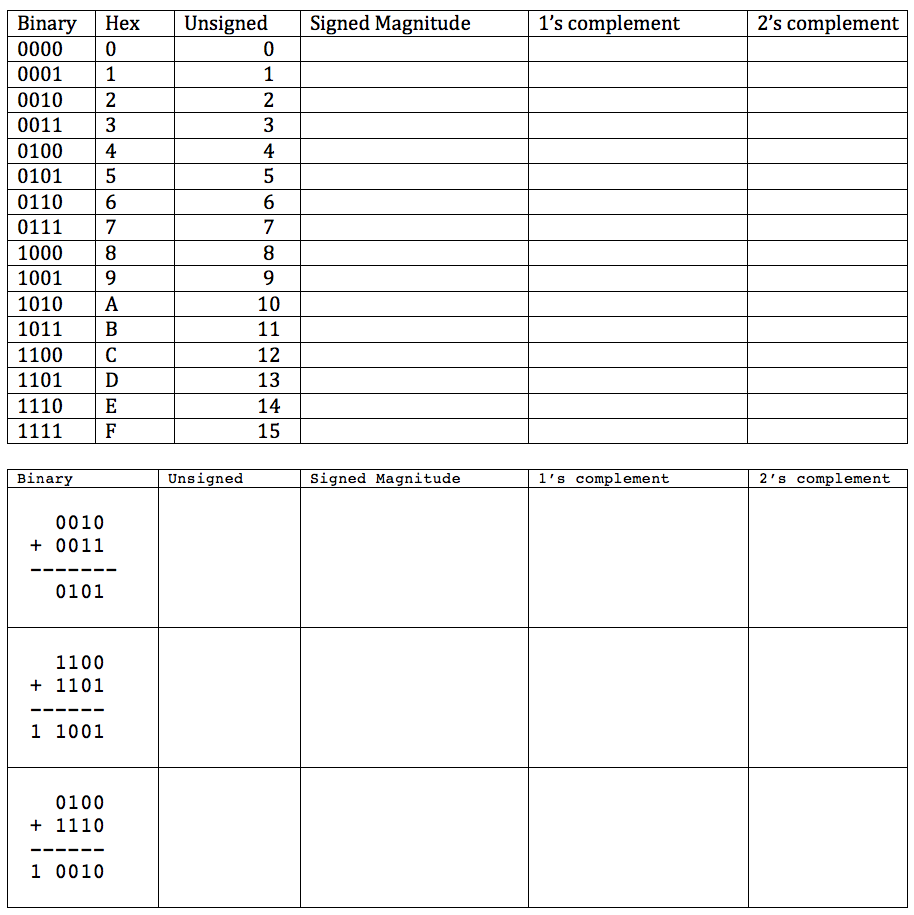CSC231 Exercises with Signed Numbers
--D. Thiebaut 09:37, 1 October 2012 (EDT)
Binary Addition in Various Systems

Exercise 1
What is the range of numbers in a 4-bit unsigned system? in a 4-bit 2's complement system? in an 8-bit unsigned system? In an 8-bit 2's complement system?
Exercise 2
An program written in some unspecified language contains an array of 10 bytes. The values of the 10 bytes are 0x10, 0xff, 0xf1, 0x00, 0x00, 0xfe, 0x73, 0x01, 0x02, 0x7f.
Are these values used to represent signed numbers, unsigned numbers, numbers in 2's complement, numbers in 1's complement, or numbers in signed magnitude?
Exercise 3
- what is the 8-bit representation of the following decimal numbers in signed magnitude, 1's complement, and 2's complement?
0 1 -1 11 -11 127 -127 128 -128
Exercise #4
- Convert the following signed, 2's complement 16-bit binary numbers to their decimal equivalent.
0000 0000 0000 0001 1000 0000 0000 0001 0000 0000 1111 1111 1111 1111 1111 1111
Exercise 5
- Perform the binary addition of the following decimal numbers using 2's complement, and assuming the numbers are 16-bit words
- (for reference, 23 decimal = 10111 binary, 100 decimal = 1100100 binary)
23 - 100 = 23 - 23 = 100 - 23 =
Solutions